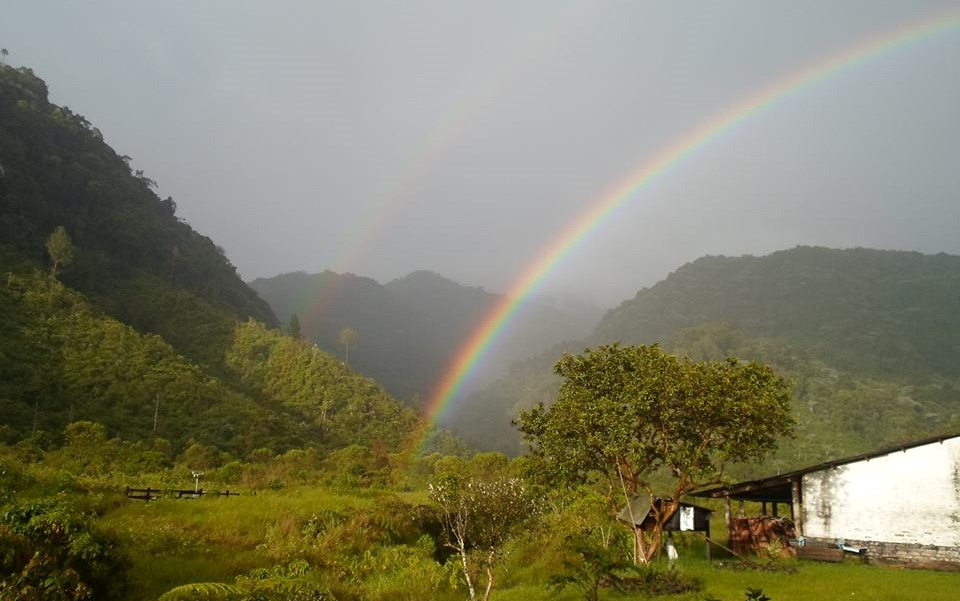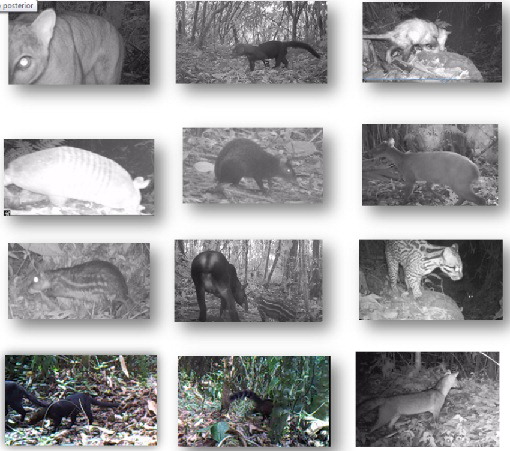During the final months of the project in early 2019, the PI Dr. Castaño and his colleagues organized two workshops. The first was with the faculty council of the Environmental Sciences School at his university. As planned, the council decided to commit funds to support the continued operation of the study site for academic purposes now that PEER funding has ended. A video showing the council’s visit to the site is available at
https://www.youtube.com/watch?v=VNdw9IgXP6M. Another workshop was conducted with the Frisby Foundation, an NGO founded by a prominent Colombian businessman based in Pereira who owns a farm near the study site. His property also features wetlands that he is interested in restoring. This NGO promotes children’s education through several activities, and the PI has discussed possible ways they could use the study site in their programmatic efforts with local kids.
Research The PI reports that he and his colleagues and students achieved significant results on all project objectives. The first was to create a baseline study of the ecosystems services of water regulation and biodiversity at the Quebrada Dali watershed. They installed a weather station, rain gauges, water level meters, and time-lapse and trap cameras around the site, and using this equipment they have created a five-year data set showing how the structure and composition of aquatic macroinvertebrates, amphibians, mammals, and wetlands vegetation evolved along with the natural succession process in the study site. The data will also be useful in promoting conservation of endangered species. The second objective focused on modeling rainfall and runoff, and the data collected should be useful in helping predict future climate impacts such as flash floods and landslides. The third objective was to build local institutional capacity to enhance long-term sustainability at the study site. Thanks to a PEER Evidence to Action supplement, the PI and his team set up three public nature trails with explanatory signs telling visitors about the natural features they were seeing. They also upgraded a building at the site so it can be used by researchers, students, and scout groups for academic work and information environmental education. The PEER team also strengthened linkages with other local universities, government agencies, a public utility company, schools, and of course the U.S. partner, and they plan to continue building on those relationships even now that the PEER grant has ended. The team has published two papers and made 16 technical presentations, with two other papers under revision as of June 2019.
Education Through his PEER project, the PI and his colleagues improved several graduate and undergraduate courses, including the Fundamentals Seminar I for the Master’s program in ecotechnology, the Hydroclimatology and Environmental Chemistry courses for the BS in environmental administration, and the Sustainable Development course for the BS in industrial engineering. The improvements included incorporation of PEER research study data into lessons and use of the study site for hands-on field training and research by the students themselves as part of their coursework. A total of 434 students (60% of them female) took the improved courses between 2014 and 2019.
Outreach and Citizen ScienceIn addition, the PEER team also developed virtual educational modules to train Scout leaders in the following topics: conservation, climate change, solid waste management, and risk management. More than 500 people (schoolchildren, scout groups, university students, etc.) have been trained somehow in the study site. He and his team have also worked hard share their data and spread the word about their workshops and other activities through many channels, including webpages, blogs, and videos. Besides the links at the top of this page, here are a few more videos produced as part of this project:
1.
Video edited to be used in the local Zoo 2.
Promotional video of the study site3.
Campaign to prevent illegal wildlife trafficking 4.
Video about mammals at the study site5.
Training course for scout leaders with modules on Conservation, Climate Change, Solid Wastes, and Risk Management. Modules may be accessed by visiting
https://univirtual.utp.edu.co/sitio/ and entering the following log-in and password: Usuario: 7807, Contraseña: eureka.
Continued Plans and Funding
As of June 2019, Dr. Castaño reports receiving a total of $718,833 in new grant funds to support his continued research efforts, provided by three different sponsors: his university, the Risaralda local government, and the local water company Aguas y Aguas de Pereira. The latter organization, which is the team’s main local partner, is doing a project to convert the study site into a formal nature reserve so it can continue to serve the general public as well as local university and school students. A five-year memorandum of understanding has been signed with the university in this regard, and Aguas y Aguas has incorporated information about the site into a video they produced about the educational activities they support: (
https://youtu.be/4H_S9QpyFTI). With respect to awards and public recognition, Dr. Castaño and his research team received public recognition during the celebration of the 25th anniversary of their university, among other reasons for their work and results at the study site. In addition, the PI became a member of the Otun river watershed council, which is made of representatives of governmental institutions, private sector, NGOs and universities. He also continues his membership in the American Ecological Engineering Society.
Back to PEER Cycle 2 Grant Recipients 




